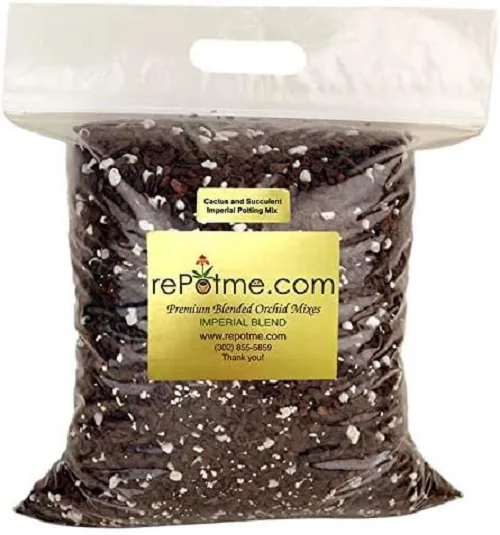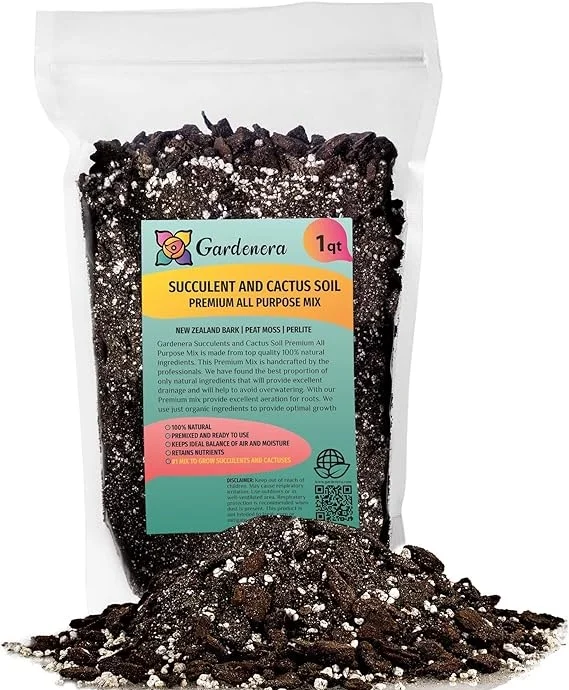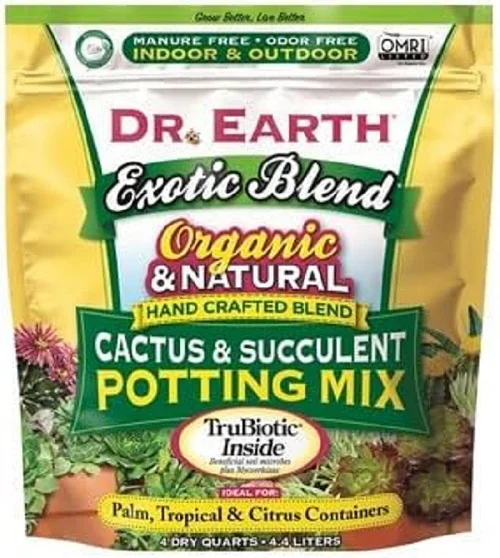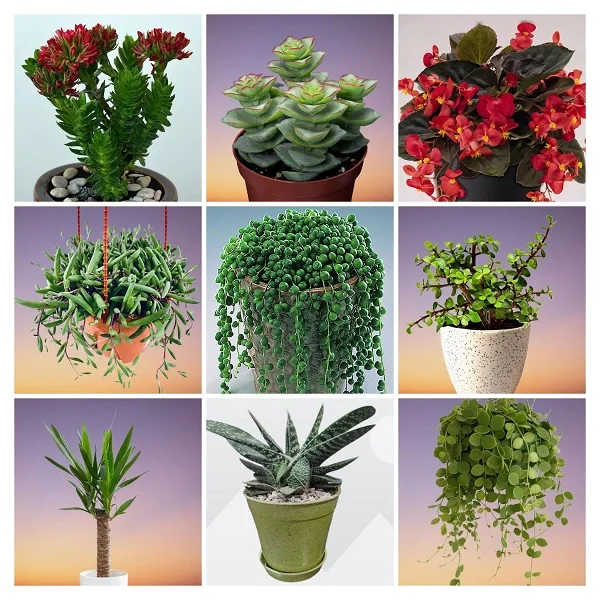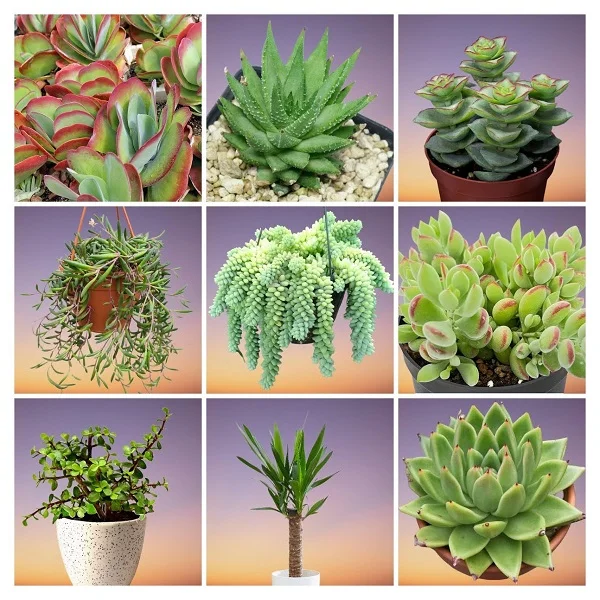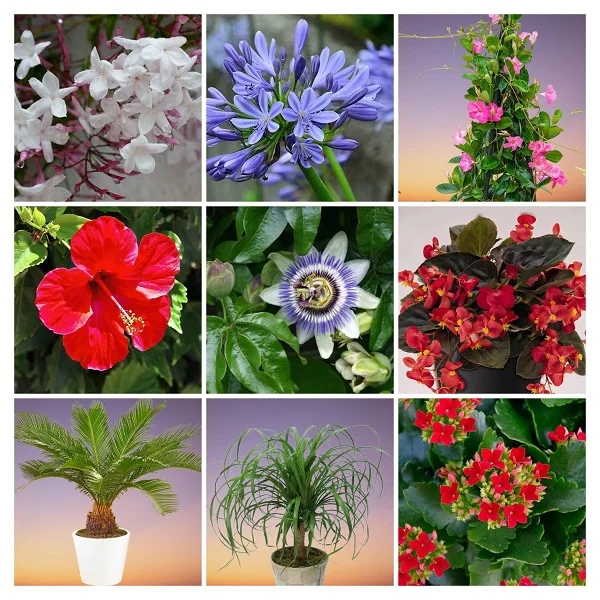How to Grow and Care for Cyanotis kewensis Teddy Bear Vine
Some links in this post may be affiliate links
Teddy Bear Vine (Cyanotis kewensis) performs best in bright indirect light with some morning sunshine, average warmth, moderate humidity and moderately moist, rich, well-drained succulents soils and monthly feeding in the growing season.
Teddy Bear Plant is an easy-care plant which makes it a fantastic choice for beginners and seasoned plant lovers alike. In this guide we explore everything you need to know to keep your Teddy Bear Vine happy, fluffy, and thriving indoors.
Let's first get to know some facts about this plant. Cyanotis kewensis is one of the popular succulent plants and bears oval-shaped, hairy (velvet-like) leaves with purple undersides and is ideal for a hanging basket or a groundcover.
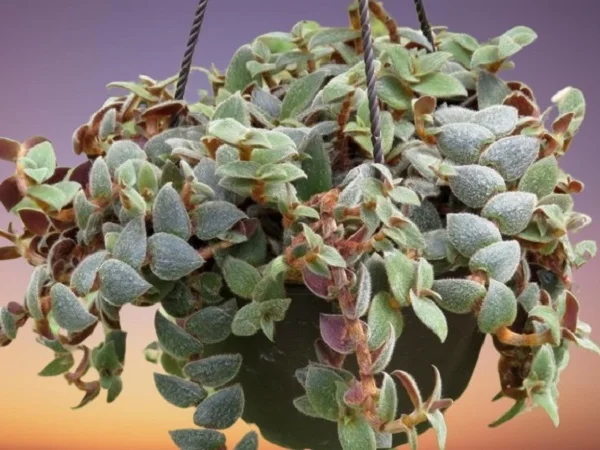
Botanical name: Cyanotis kewensis
synonym Cyanotis beddomei
Family: Commelinaceae
Common name: Teddy Bear Vine, Teddy Bear Plant
Origin
Cyanotis kewensis also called Cyanotis beddomei is native to South Africa.
Size
Teddy Bear Plant is a slow growing plant whose stems cascade downwards and are about 1-2 feet long which makes it ideal for a hanging basket, a plant shelf or a tabletop. It is among the best hanging succulents for indoors.
Flower
Teddy Bear Vine flowers are about 1 inch mauve colored, blue-violet or pinkish-purple.
Is Teddy Bear Vine toxic to pets?
No. Cyanotis kewensis is non-toxic to humans and pets according to Succulents Addiction. Teddy Bear Vine is not toxic to cats. The plants are some of the pet-safe plants for the home and office space.
Similar Plants
Teddy Bear Vine Plant is closely related to Pussy Ears Vine. The foliage in Cyanotis kewensis (Teddy Bear Vine) bears rusty brown hairs while Cyanotis somaliensis (Pussy Ears Vine) native to Somalia, has larger leaves and the hairs are pale grey. At a glance Teddy Bear Vine resembles an Inch Plant save for its hairy foliage from which it has earned its common name.
Teddy Bear Vine benefits
- Easy-care: It thrives with minimal watering and bright light.
- Fast-growing & hardy: It bounces back quickly from minor neglect.
- Great for hanging: It is perfect for trailing over shelves, desks, or hanging planters.
- Pretty fuzzy leaves: The soft, trailing stems with bronze-green velvety foliage are adorable.
How to care for Teddy Bear Vine indoors
To care for Teddy Bear Vine indoors, provide bright indirect light with 4-6 hours of morning sunshine, warmth of 15-270C, humidity of 50-55% and moderately moist, rich succulents soils and monthly feeding during the growing season.
Cyanotis kewensis care requires pruning to to encourage a compact growth and to rejuvenate growth. Repotting is only necessary when it becomes root-bound. Keep reading for more on these growing conditions and how to provide them.
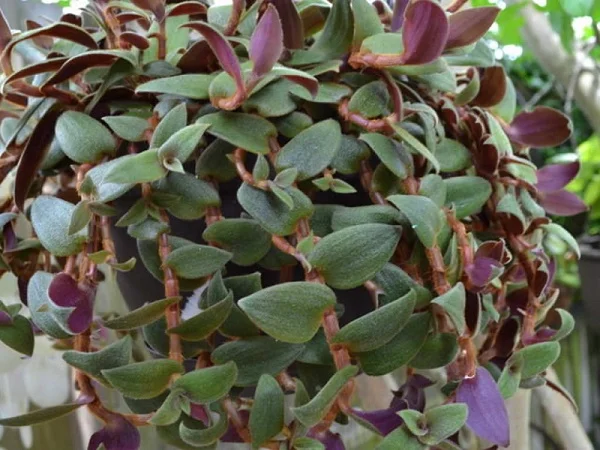
Watering
Water your Teddy Bear Vine liberally in spring and summer while allowing the top 2-3 inches of soil to dry out between waterings. Keep the soil moderately moist and avoid overwatering as it can result in yellowing, rotting and leaf drop.
Decrease watering in fall and winter to keep the soil slightly moist as growth is minimal at this time. Do not allow the soil to dry out completely to prevent wilting, drooping and leaf fall.
Use water that is at room temperature to prevent cold shock which can result in stunted growth and leaf loss. Avoid chlorinated water as it can cause browning of leaves; use rain water or filtered water.
Make sure that the soil is free-draining and the pot has a drainage hole to prevent waterlogging which can lead to rotting of the vine.
Take care not to wet the foliage during watering as it can encourgae fungal diseases; you may water from the bottom.
Light Requirements
Teddy Bear Vine Plant thrives in bright indirect light with 4-6 hours of morning sunshine to enhance the leaf color. Keep it away from hot midday sunshine to prevent scorching which is indicated by brown leaf marks.
If the light is not adequate the plant exhibits leggy growth (long weak stems with widely spaced small leaves). Where the natural lighting is not adequate, you may use a grow light to supplement it.
Regularly rotate the pot to ensure that the plant receives light on all sides for a balanced growth as well as prevent legginess.
Temperature & Humidity
Cyanotis kewensis prefers an average warmth of 15-270C and a minimum of 130C. Keep it away from sources of drafts to avoid reduced growth, wilting, yellowing and leaf drop.
Teddy Bear Plant prospers in a humidity of 50-55%. However, if the air is too dry, it may result in brown leaf tips and edges. To step up humidity, set the pot on a wet pebble tray, use a humidifier or group the plants together. Maintain a good air flow to minimize fungal diseases.
Fertilizer (Feeding)
Feed your Cyanotis kewensis with a balanced, water-soluble fertilizer every 4 weeks in spring and summer to promote a lush growth. Avoid too much fertilizer as it can cause yellowing and leggy growth.
Stop feeding in fall and winter as growth is minimal and feeding at this time can lead to fertlizer burn and eventual death of the plant.
Potting Soil
Teddy Bear Vine soil should be light weight, well-draining and rich in organic matter. The soil should be loose enough to allow water to drain out fast enough to avoid soggy soil which can cause rotting. Cactus and succulents potting soil is ideal for this vine as it drains easily and does not hold excess moisture.
Repotting
Repot your Teddy Bear Plant at the beginning of growing season (spring to early summer) when root-bound. A pot one size larger than the current one is adequate to avoid overpotting.
Select a terracotta pot as it is porous and allows water to drain faster. This prevents the soil from holding too much water and getting soggy. Take a look at these terracotta pots with saucer on Amazon.
Use a pot with a drainage hole to prevent the soil from getting soggy as it can lead to rotting and eventual death of the plant.
Pruning & Maintenance
Pruning Teddy Bear Vine involves:
- Regularly pinch off the growing tips to encourage a compact, bushy growth and to prevent legginess.
- Cutting back the stems as they become leggy with age to rejuvenate (encourage) new growth. You may use the pruned stems to propagate new plants.
Teddy Bear Vine Propagation
Cyanotis kewensis propagation is best done by plant division or from stem cuttings at the beginning of the growing season (spring to early summer) when in active growth.
Learn how to propagate Teddy Bear Vine (Cyanotis kewensis).

Teddy Bear Vine Problems and Fixes
Cyanotis kewensis problems are browning, plant dying, leggy growth, limp and drooping stems, brown leaf tips, pests, diseases among others. Keep reading for more on these problems and their remedies.
Plant browning
Why is my Teddy Bear Vine turning brown?
Your Teddy Bear Vine is turning brown due to inconsistent watering, pest infestation, root-rot, extreme temperatures, too little light, improper feeding, aging among others.
Check out these 9 Reasons Why Teddy Bear Vine is Turning Brown and their solutions.
Plant dying
Why is my Teddy Bear Plant dying?
Your Teddy Bear Plant is dying from incorrect watering, nutrients deficiency, salts buildup, insufficient light, temperature stress, poor quality soil, root-rot, pest infestations among others.
Take a look at these 10 Reasons Why Teddy Bear Vine is Dying and How to Revive It.
Leggy growth
Leggy growth (long weak stems with widely spaced undersize leaves) on Teddy Bear Vine are due to age, little light, inconsistent watering or nutrients deficiency.
How to fix it
Aging: As the plant ages, the stems become leggy. Cutback the stems to encourage new growth.
Too little light: Move the plant to a brighter spot or instal grow light to supplement the natural light.
Inconsistent watering: Water the vine when the top 2-3 inches of soil dry out but do not allow the soil to dry out completely.
Nutrients deficiency: Feed the plant with a balanced, water-soluble fertilizer every 4 weeks in spring and summer.
Limp, drooping stems
Limp, drooping stems on Teddy Bear Vine are caused by underwatering, soggy soil or temperature stress.
How to fix it
Immediately water the plant thoroughly and it should recover.
Underwatering: Water when the top 2-3 inches of soil dry ou and never allow the soilball to dry out completely.
Soggy soil: Use a pot with a drainage hole and free-draining soil.
Temperature stress: Keep the plant away from sources of drafts like AC units, hot air vents, windy doors and others to prevent extreme temperatures.
Brown, shrivelled leaf tips
Brown, shrivelled leaf tips on Teddy Bear Plant are caused by dry air which leads to extremely low humidity. To increase humidity, set the pot on a wet pebble tray or use a humidifier.
Pests
Common pests on Teddy Bear Vine are aphids and spider mites which are more prevalent in dry, stuffy conditions.
How to fix it
- Isolate the affected plant to prevent spread to the other plants.
- Treat it with a horticultural oil as per the manufacturer's recommendations.
- Regularly inspect the plant for these pests and carry out timely control measures.
- Keep the plant well-pruned to discourage the pests.
- Maintain a good air circulation to depress the pests infestations.
Diseases
Teddy Bear Vine is quite disease tolerant. However, it is prone to root-rot which is prevalent in soggy and overwatered soil. It is characterized by yellowing and wilting of the leaves which is rapidly followed by browning and plant collapse.
How to fix it
- Carefully slip the plant out of its pot and inspect the roots.
- Trim the brown-black, mushy roots and treat the healthy roots with a copper-based fungicidal solution. Ensure to follow the instructions on the label.
- Disinfect the pot with the fungicidal solution or use a fresh pot to repot the plant in fresh, well-draining soil.
- Do not water the plant immediately; keep it dry for 5-7 days before you resume watering.
- Use a pot that has a drainage hole and well-draining soil to prevent waterlogging.
- Cut down on watering in fall and winter to keep the soil slightly moist as growth is slowed at this time.
Conclusion
Teddy Bear Vine (Cyanotis kewensis) is a low-maintenance, fuzzy-leaved beauty that is perfect for indoor gardening. Whether you grow it in a hanging basket, or pot, this resilient plant adds character and charm to any space. By following these growing tips, you can enjoy a healthy and thriving Teddy Bear Vine.
Frequently Asked Questions
1. How do you to care of a Teddy Bear Vine?
- Place your Teddy Bear Vine infront of a brightly-lit window where it will receive bright indirect light with some morning sunshine.
- Give it an average warmth of 15-270C and keep it away from cold drafts.
- Grow the plant in neutral to acidic, rich, moderately moist, succulents soil and keep the soil slightly moist in the cold season.
- Feed the plant monthly with a balanced, water-soluble fertilizer in spring and summer but do feed in fall and winter.
- Maintain a humidity of 50-55% as the plant has no need for extra humidity.
- Repot the vine in the beginning of the growing season only when it is pot-bound.
- Regularly remove dead foliage to maintain the plant neat and also discourage pest and disease infestations.
- Regularly pinch off the growing tips to encourage a bushy, compact growth.
- Cutback the straggly stems to rejuvenate growth and control growth.
- Regularly inspect your plant for any pests and diseases and take timely control measures.
2. How often do you water a Teddy Bear Vine?
Teddy Bear Vine requires moderately moist soil during the growing season and slightly moist soil in the cold season. To achieve these, liberally water the plant in spring and summer until water drains through the drainage hole and allow the top 2-3 inches of soil to dry out between waterings. Significantly reduce watering in fall and winter but do not allow the soil to dry out completely.
3. How do you prune a Teddy Bear Vine?
Remove dead leaves to keep the plant tidy as well as discourage pests and diseases. To encourage a compact, bushy growth, regularly pinch off the growing tips. With age, the stems become leggy; cut them back at the beginning of the growing season to rejuvenate new growth and to encourage a lush growth.
4. How do you repot a Teddy Bear Vine?
- Repot Teddy Bear Vine only when it becomes pot-bound. Thoroughly water the plant and carefully slip it out of its pot.
- Remove most of the old soil from the roots, carefully disentangle the roots and cut away old and dead roots with a sterilized pair of scissors.
- Select a terracotta pot one size larger than the current one and fill it half way with cactus and succulents soil.
- Position the plant in the center of the pot and fill the pot and lightly press down the soil.
- Wet the soil thoroughly and replace the plant to its growing spot.
5. Why is my Teddy Bear Vine dying?
Your Teddy Bear Vine is dying due to poor growing conditions like incorrect watering, improper feeding, too little light, cold drafts, poor quality soil, root-rot, pest infestations among others.
6. What is the other name for Teddy Bear vine?
Teddy Bear vine is known by the botanical names Cyanotis kewensis and Cyanotis beddomei.
7. Is Teddy Bear Vine toxic to animals?
No. Teddy Bear Vine is non-toxic to humans and pets as indicated by Succulents Addiction. It is safe to grow in the home.
8. What is the size of a Teddy Bear Vine?
Teddy Bear Vine is a slow-growing plant whose stems can grow to about 1-2 feet long. The stems cascade downwards making it ideal for a hanging basket, a plant shelf or a tabletop.
9. Can you propagate Teddy Bear Vines in water?
Teddy Bear Vine is propagated at the beginning of the growing season by plant division or from stem cuttings which can be rooted either in water or in soil.
You liked it? Share on social media.
Related Content
Amazon Associates Disclosure
Homeplantsguide.com is a participant in the Amazon Services LLC Associates Program, an affiliate advertising program designed to provide a means for sites to earn advertising fees by advertising and linking to amazon.com.
